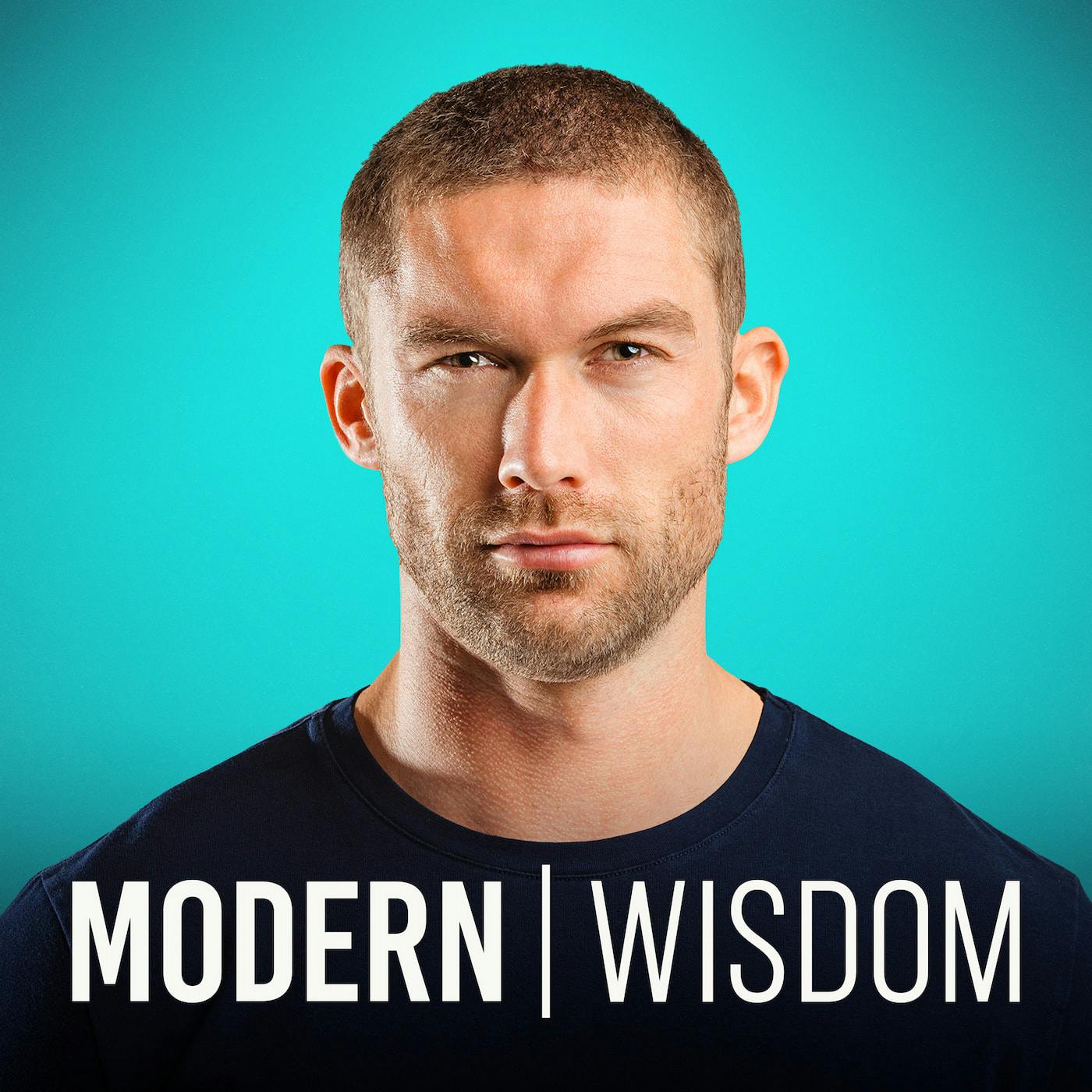
August 15, 2024 • 2hr 0min
#825 - Macken Murphy - The New Science Of Why Men & Women Cheat
Modern Wisdom

Key Takeaways
- A new study by Macken Murphy and colleagues provides evidence supporting the "dual mating hypothesis" as an explanation for infidelity, particularly for women
- The dual mating hypothesis proposes that women's infidelity functions to pair "good genes" from an affair partner with good parenting/investment from a primary partner
- This contrasts with the "mate switching hypothesis" which proposes infidelity is primarily about finding an overall better mate to switch to
- The study found women rated affair partners as more physically attractive but primary partners as better parents, supporting dual mating predictions
- Men showed a similar pattern, rating affair partners as more attractive but primary partners as better parents
- Top stated reasons for infidelity were relationship dissatisfaction (65% of women, 30% of men), uninvested partner (22% of women), and revenge (15.5% of women)
- Predictors of infidelity include past cheating, high sociosexuality, narcissism, and showing interest in other potential partners
- Infidelity appears to have some genetic/heritable component based on twin studies
- People who are cheated on are more likely to be cheated on again in future relationships
- The findings are consistent with humans being "socially monogamous" but not strictly sexually monogamous from an evolutionary perspective
Introduction
In this episode, Chris Williamson interviews evolutionary biologist Macken Murphy about his new research on the evolutionary drivers of infidelity in humans. Murphy discusses a study he conducted that provides evidence supporting the "dual mating hypothesis" as an explanation for why people cheat, particularly women. The conversation covers the background of competing theories about infidelity, details of the new study's methodology and findings, and broader implications for understanding human mating behavior and relationships.
Topics Discussed
Background on Infidelity Theories (4:12)
Murphy explains the background of two competing evolutionary psychology theories about the drivers of infidelity, particularly for women:
- Dual mating hypothesis: Proposes women's infidelity functions to pair "good genes" from an affair partner with good parenting/investment from a primary partner
- Mate switching hypothesis: Proposes infidelity is primarily about finding an overall better mate to potentially switch to
He notes the dual mating hypothesis was the dominant theory for many years but has been challenged recently. Murphy's new study aimed to directly test predictions from both hypotheses.
New Study Methodology and Findings (14:37)
Murphy describes the methodology of his new study:
- Recruited 254 people who had actually engaged in infidelity
- Had participants rate both their affair partner and primary partner on various attributes
- Compared ratings to see which hypothesis predictions were supported
Key findings:
- Women rated affair partners as more physically attractive but primary partners as better parents
- This crossover effect supports dual mating hypothesis predictions
- No difference in overall mate value or desirability between affair/primary partners
- Men showed a similar pattern, rating affair partners as more attractive but primary partners as better parents
Murphy notes this provides strong support for the dual mating hypothesis and contradicts mate switching predictions.
Stated Reasons for Infidelity (46:05)
The study also collected qualitative data on people's stated reasons for cheating:
- Top reasons for women:
- Relationship dissatisfaction (65%)
- Uninvested partner (22%)
- Revenge for partner's cheating (15.5%)
- Top reasons for men:
- Relationship dissatisfaction (30%)
- Attractive affair partner (16%)
- Sexual desire (14%)
Murphy notes the qualitative data is subject to reporting biases and people may not have full insight into their motivations.
Predictors of Infidelity (1:24:47)
Murphy discusses factors that predict a higher likelihood of cheating:
- Past cheating behavior - people who have cheated before are 3x more likely to cheat again
- Showing interest in other potential partners
- Narcissism
- History of promiscuity/high sociosexuality
- Premarital s*x is predictive of extramarital s*x
Signs of Cheating (1:32:12)
Potential signs someone is cheating:
- Increased digital secrecy (e.g. guarding phone)
- Changes in behavior or routine
- Murphy notes it's difficult to study active cheaters, but people should trust their instincts if something feels off
Repeat Infidelity Victims (1:49:11)
Murphy discusses research showing people who are cheated on are more likely to be cheated on again in future relationships:
- Could be due to poor mate guarding skills
- May be attracted to traits that correlate with higher infidelity (e.g. narcissism)
- Could be better at detecting cheating
- Not necessarily victim-blaming, but shows patterns in partner selection can play a role
Evolutionary Context (1:53:52)
Murphy puts the findings in broader evolutionary context:
- Consistent with humans being "socially monogamous" but not strictly sexually monogamous
- Many socially monogamous species engage in some extra-pair mating
- Does not mean humans aren't "naturally monogamous" - social monogamy is still the dominant pattern
- Infidelity appears to be a "conditional strategy" that some individuals employ sometimes
Conclusion
Murphy's new research provides evidence supporting the dual mating hypothesis as an explanation for infidelity, particularly in women. The findings suggest affair partners are chosen more for physical attractiveness/"good genes" while primary partners are valued more for parenting abilities. This aligns with the idea that infidelity can function to pair genetic benefits from one partner with parental investment from another. However, Murphy emphasizes that infidelity has many drivers and most people do not engage in it. The results are consistent with humans being a socially monogamous species that also has some evolved tendencies toward extra-pair mating in certain circumstances. Overall, the study provides new insights into the evolutionary psychology of human mating behavior and relationships.